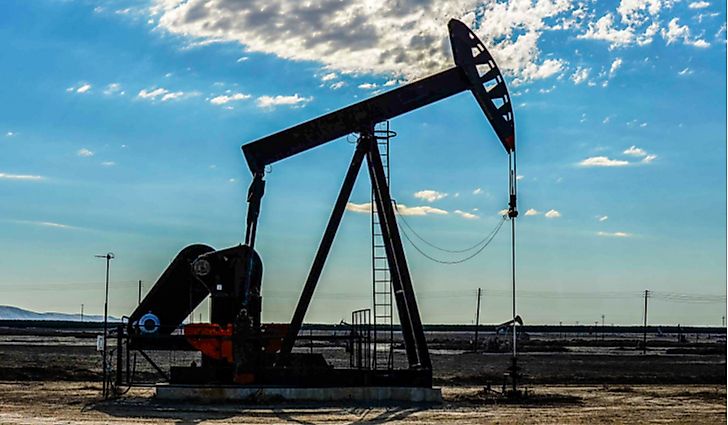What Are The Major Natural Resources Of Oman?

Oman is an Arab country on the southeastern coast of the Arabian Peninsula. The county is bordered to the southwest by Yemen, west by Saudi Arabia and northwest by the United Arab Emirates. Oman shares maritime borders with Pakistan and Iran.
The national economy of Oman is relatively diversified. This economy is based on justice and principles of a free economy. The economy of Oman is dependent on oil exports. Revenues from petroleum have enabled Oman’s dramatic development over the last 30 years. Over the past 50 years, the GDP per capita has continuously expanded. Besides, the economy improved significantly in 1999 as a result of the mid-year upturn of oil prices. Tourism is the fastest growing industry in the country. Other sources of income for the economy of Oman include industry and agriculture. However, agriculture and industry account for less than 1% of the country’s total export.
Less than 1% of Oman is under cultivation. Agriculture is primarily subsistence. Products from agriculture include vegetables, grains, limes, and dates. The natural resources of Oman are fuel resources (petroleum and natural gas), minerals resources (copper, marble, asbestos, chromium, gypsum, and limestone), and fish.
Petroleum
Petroleum fuels the economy of Oman and has contributed to the dramatic development of the country in the last 30 years. Oil was first discovered in 1964, in the western desert near Fahud. Oil production began in 1967. The oil production is carried out by Petroleum Development Oman (PDO). The Oman government owns 60% of the PDO. Foreign interests such as Royal Dutch Shell and Compagnie Francaise des Petroles (Total) and Partex own the remaining 40%. In 1976, Oman was producing 366,000 barrels of oil per day. In late 1980, recoverable resources were depleted bringing down the production to 285,000 barrels a day. From 1981 to 1986, oil prices declined. Oman was able to compensate for the decrease in prices by increasing its oil production to 600,000 barrels a day. Revenues dropped dramatically, forcing the production to be cut back temporarily. In mid-2000, production level reached 900,000 barrels a day and has remained at this value up to date.
Compared to its neighbors, Oman does not have immense oil resources. Oman's total proven reserves of petroleum total about 5.5 billion barrels, making it the 25th largest in the world. The complex geology of the country makes exploration and production of oil an expensive challenge.
Natural Gas
The natural gas reserves of Oman are estimated at 849.5 billion cubic meters. At this volume, they are the 28th largest reserve in the world. In 2008, annual natural gas production was at 24 billion cubic meters. All oil and gas infrastructure and projects in Oman are managed by the Ministry of Oil and Gas. The natural gas reserves provide fuel for power generation and desalination. In 2000, the Oman LNG processing plant in Sur was opened. The plant produces 6.6 million tons/year. The plant also produces little amounts of gas liquids and condensates.
Mineral Resources
The mineral resources of Oman are aluminum, chromite, dolomite, clay, quartz, zinc, copper, salt, silica, gypsum, limestone, gold, iron and steel, low-grade iron, and cement. The Sultanate’s resources are still relatively untapped, despite various mining and quarrying operation going on in the country. Industrial minerals and large metals remain unearthed. The mountains in Oman contain ophiolites that remain intact and exposed. These ophiolites contain metal deposits such as chromite, lead, palladium, cobalt, magnesium, platinum, copper, manganese, silver, gold, nickel, vanadium, and zinc. The mining industry in Oman has appealed interest from both local and foreign operators. In 2014, the Sultanate’s government established the Public Authority for Mining. In 2016, the Mining Development Oman was established. These two bodies regulate the mining Industry of Oman.
Copper
In Oman, the mining of copper has been going for thousands of years. The main copper reserves are located in the Suhar area of Al Batinah coast. Copper mining operations in Oman are carried out by the Oman Mining Company which is government-owned. Ore processing at the Sohar complex began in 1983. The Far East is the main market for products of the Oman Mining Company, with the biggest markets in Taiwan, Japan, and South Korea. The Oman mining company together with the Mawarid Resources have exploited up to 35 million tons of copper in the Sohar and Shinas areas. Besides, other international companies such as the Alara Resources based in Australia have shown interest in copper mining in Oman.
Chromite
Mining and exporting of chromite in the Sultanate of Oman began in the early 1980s. About 30 million metric tons of chromite is located in the country. In 1991, the government of Oman established the Oman Chromite Company. Due to the worldwide shortages of ferrochrome in stainless steel production and rising demand from China, Oman has begun exporting metallurgical grade chromite in the last few years.
Gypsum
The Oman Sultanate is reportedly the world’s largest exporter of gypsum. The domestic resources of gypsum of the country are estimated to be at one billion tons.
Limestone is mined in the northern and southern areas of the country. The limestone supplies the Oman Cement Company plants in the Raysut Cement Corporation and the Rusalyl Industrial Estate.
Tile and marble are mined for local construction purposes.
Surveys have shown that there are numerous deposits of metal ores located in the Al Jabal al Akhdar, and the Sayh Hatat area. Also, numerous deposits of industrial metals such as zinc, silver, nickel, manganese, lead, iron ore, asbestos, and coal are present in Oman. Hawshi Huqf, Jalan and Dhofar regions have substantial deposits of zinc and lead. The Al Kamil region is known to have coal reserves. The total coal reserves of the sultanate are estimated at 122 million tons.











